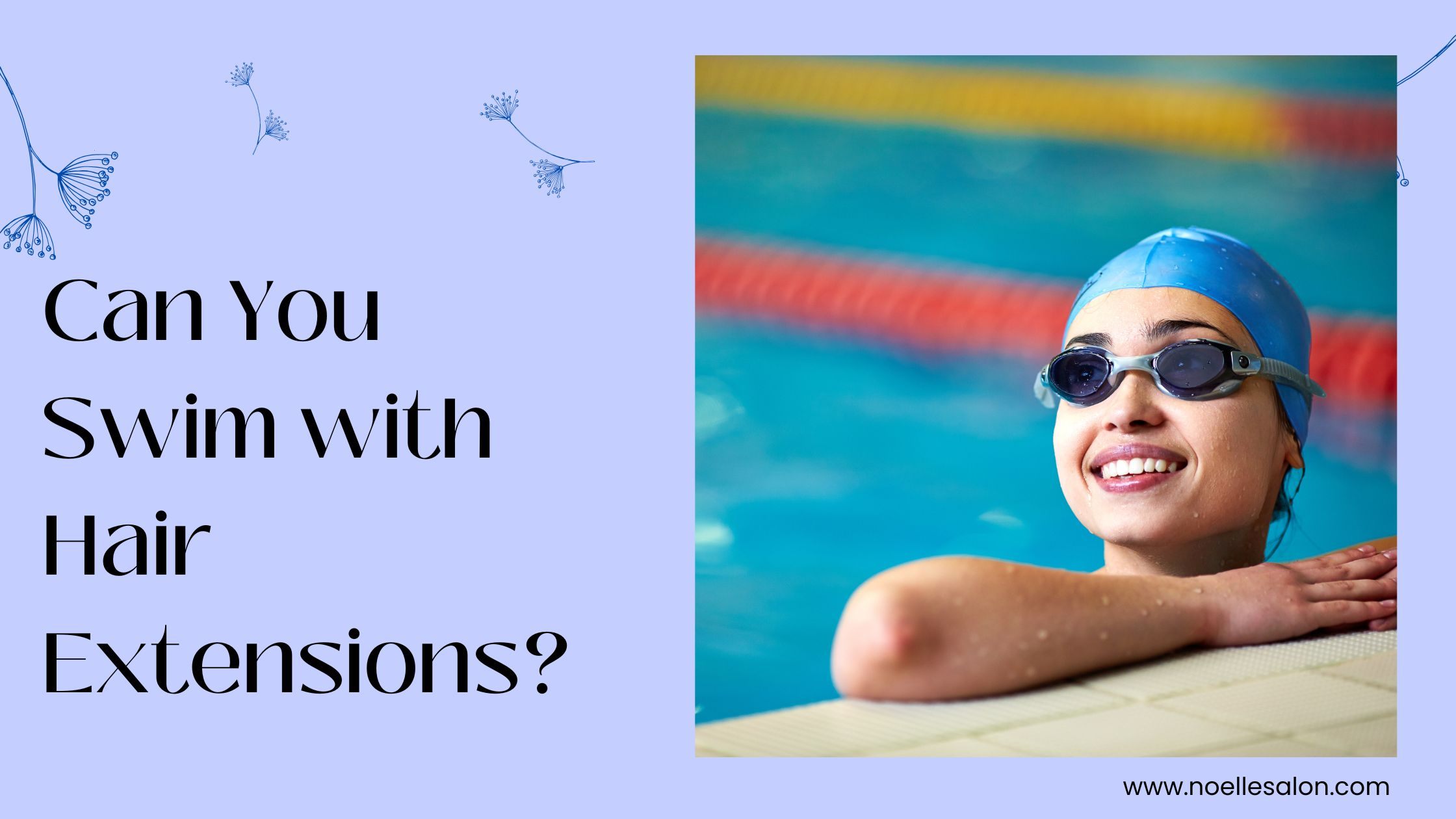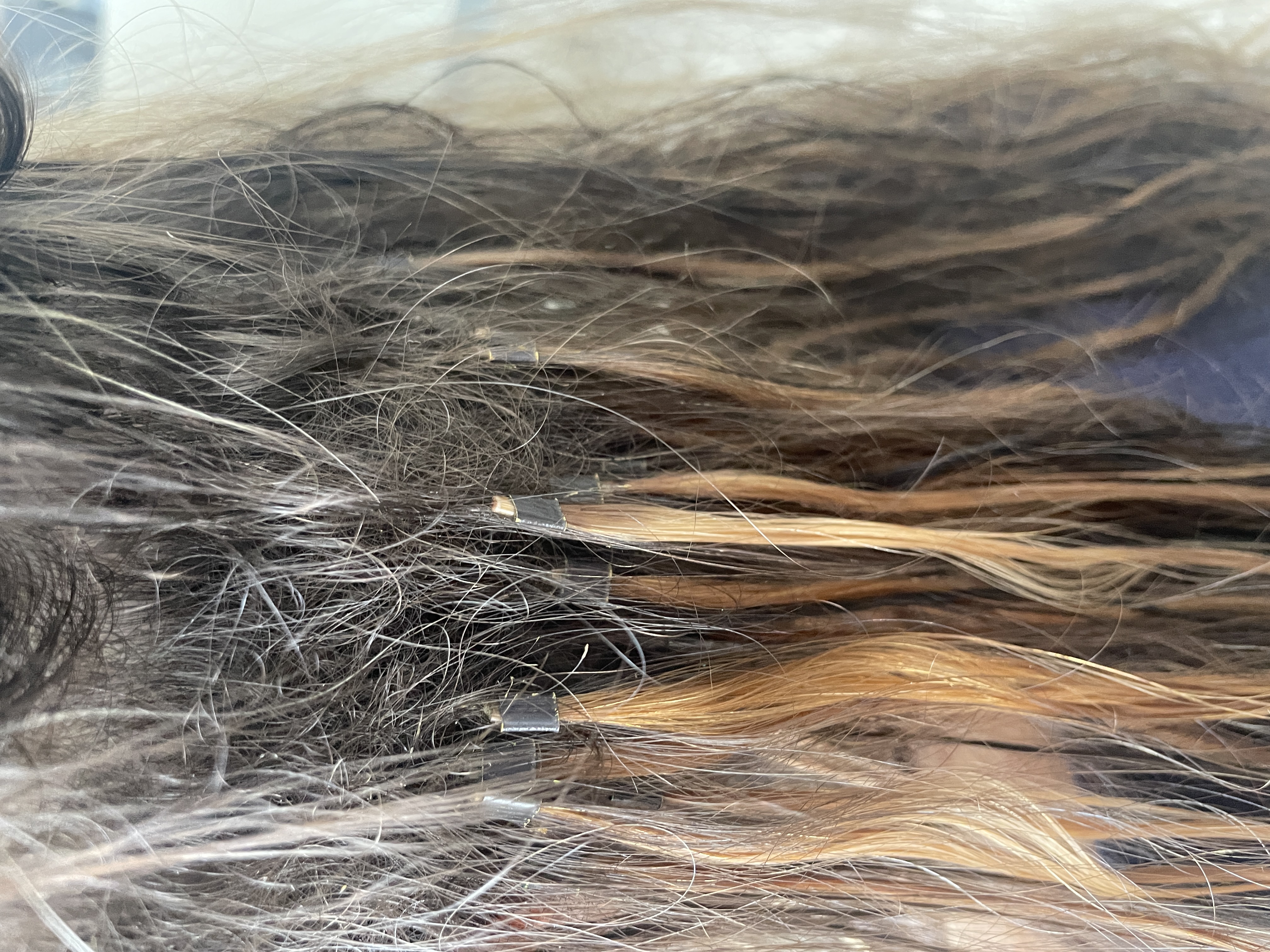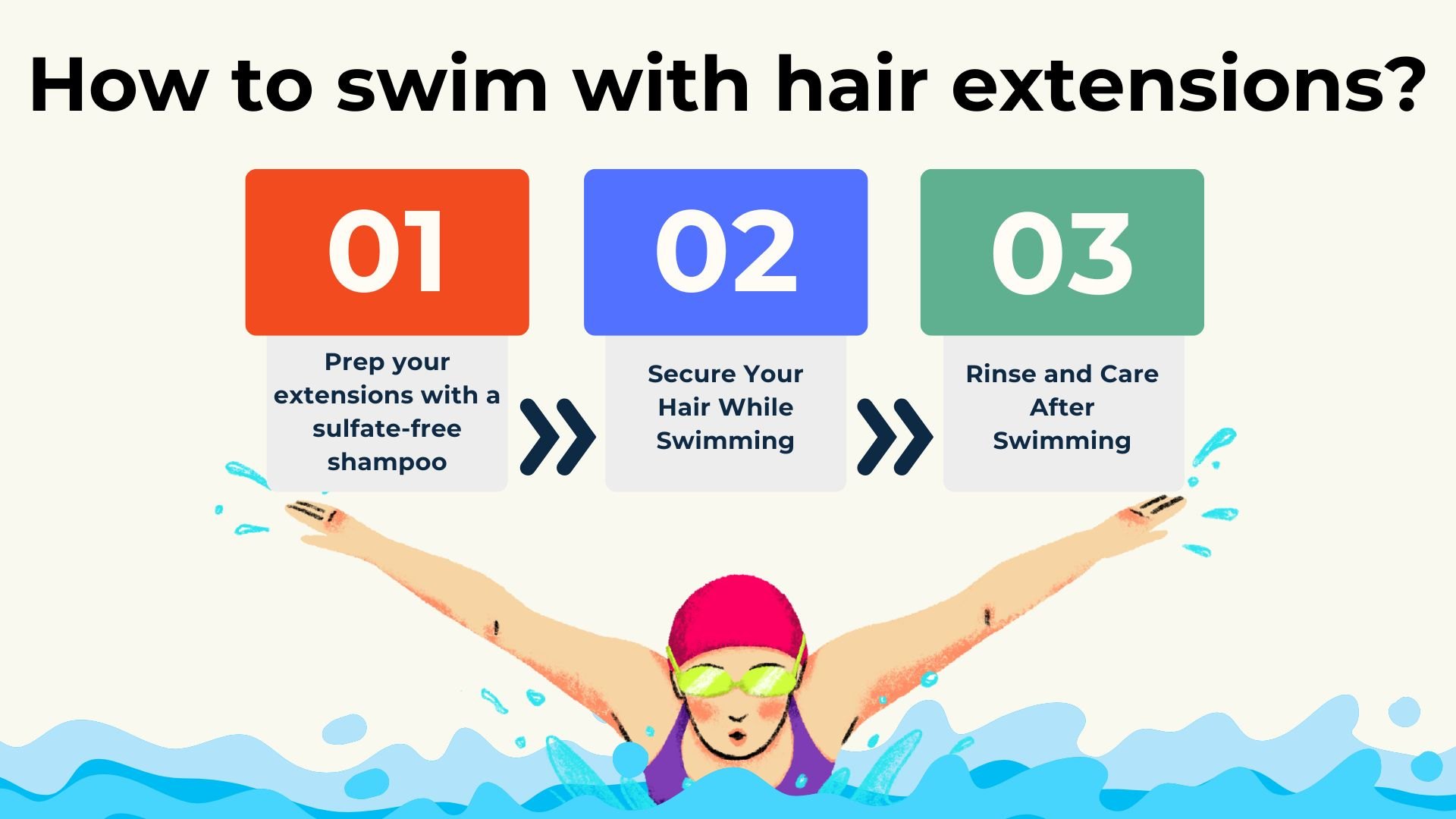Can You Swim with Hair Extensions? Your Ultimate Guide

|
|---|
Can you swim with hair extensions? Of course, you can. But you need to take some careful steps. Even premium hair extensions can handle being in a swimming pool or in a lake, only if you take care of them the right way. In this article, we will talk about the risks of swimming with hair extensions and the steps you can take to ensure the longevity of your extensions.
How Water Impacts Hair Extensions?
Water can affect different types of hair extensions in a range of ways. The type of extension you use will help decide how long it lasts.
-
Human hair extensions are the best option for swimming. They are strong and can hold up well when you go into water. These extensions will keep their smooth look and not lose their color as fast as other types. Still, you need to look after them if you are in pool water or seawater a lot.
-
Synthetic hair extensions do not do as well when they get wet. They can get tangled or lose their color, and they might even start to come apart, especially if you spend time in places with lots of minerals in the water.
-
Extension with bonds such as tape-ins or keratin bond fill-ins might not stay in place for long if you swim often. The chemicals in pool water or salt in seawater can weaken the glue or bond. This might make your extensions slip out or get ruined.
-
Clip-in extensions, while not designed for water use, can be worn in specific situations, but it’s not recommended. Since they don’t offer a strong hold, they can shift or slip out while swimming. Moreover, wetting them frequently, especially if they're synthetic, can cause matting or premature wear. If you do choose to swim with clip-ins, it’s best to secure them tightly and wear a protective swim cap, though most professionals suggest removing them beforehand.
So, knowing all this before you swim helps you get ready. It also tells you why it is important to take good care of your hair after being in the water, so your extensions keep looking nice.
What are the Key Risks of Swimming with Hair Extensions?
There are two main risks associated with swimming when you have hair extensions. By knowing these risks, you can prepare before you swim and care for your extensions after being in the water. Here they are:
Risk 1: Damage from Chlorine and Salt Water
Chlorine and saltwater are two common reasons for hair extension damage. These things take away the natural oils. Your hair gets dry, becomes weak, and breaks easily. If you have human hair extensions, swimming can also change the hair color. This is more pronounceable with light shades like blonde. Sometimes the chlorine gives hair a green or brassy look.
Salty water makes moisture loss worse. This means the hair can tangle more as salt crystals can get stuck in the extension bonds and make them weaker as time goes by. If you are someone who goes to pools a lot, it is good not to use products that have SLS (Sodium Lauryl Sulfate).
Risk 2: Tangling and Matting Issues
 Tangling and matting often happen when you swim with extensions. Water takes away the natural oils from your extension hair and scalp. This leaves the hair feeling rough, and it can tangle or knot more. It gets worse if your extension hair does not stretch the same way as your natural hair.
Tangling and matting often happen when you swim with extensions. Water takes away the natural oils from your extension hair and scalp. This leaves the hair feeling rough, and it can tangle or knot more. It gets worse if your extension hair does not stretch the same way as your natural hair.
When you go into pool water or seawater, matting is a bigger problem. This is true, especially at connection points like the wefts or tape area. If you use detangling methods, such as a paddle brush or a comb that has looped bristles, and follow with conditioning after a swim, you can reduce these problems.
How to Swim with Hair Extensions?
 Swimming with extensions needs the right precautions and special care. Let us look at some ways to keep your extensions safe when you go swimming:
Swimming with extensions needs the right precautions and special care. Let us look at some ways to keep your extensions safe when you go swimming:
Step 1: Prep Your Extensions Before Swimming
Before entering the water, prep your extensions with a sulfate-free shampoo to clear any product buildup and soften the hair. Apply a leave-in conditioner to help lock in moisture and guard against chlorine or saltwater damage. Avoid alcohol-based products and never apply conditioner directly on the bond areas, as this can weaken the attachment.
To minimize tangling later, loosely secure your hair. But the focus at this stage is on nourishment and bond protection through proper product use.
Step 2: Secure Your Hair While Swimming
Once you're ready to swim, tie your extensions into a braid or loose bun. These styles reduce movement in the water, helping to prevent knots and reduce tension on the bonds. For added protection, wear a swimming cap.
While it might not fully cover all your hair, it acts as a barrier that limits water exposure. This is especially useful for prolonging the life of bonded extensions.
Step 3: Rinse and Care After Swimming
After a refreshing dip, rinse your hair immediately with fresh water to remove salt, chlorine, and other residues. Use a sulfate-free shampoo and moisturizing conditioner, and gently pat dry to remove excess water. Detangle using a wide-tooth comb or looped-bristle brush.
Once a week, treat your extensions to a deep conditioning session. This replenishes lost moisture and keeps the hair soft, shiny, and manageable. Avoid direct sun exposure right after your swim to prevent further dryness.
What Are Some Additional Tips for Swimming with Hair Extensions?
Swimming with extensions does not need to make you feel stressed. Here are some additional hair extension care tips to follow while swimming:
-
Stay in the shade when you can to keep UV rays from drying out your hair.
-
Apply coconut oil to the ends of hair to maintain its luster.
-
Go to your salon for check-ups after you swim to get help from the pros.
-
Try using leave-in conditioners or similar products before swimming, focusing on places close to the attachment bonds.
-
Do not rub your extensions; gently pat them and let them air dry. This will reduce the stress on your hair.
-
Try to keep your swims short. Less time in water means less moisture damage and will help the lifespan of your extensions.
How Can Noelle Salon Help in Extending the Longevity of Your Hair Extensions?
At Noelle Salon, we specialize in high-quality, professionally applied hair extensions designed to blend seamlessly and last longer. But our service doesn’t end at installation. We go a step further by helping you protect that investment, especially in situations like swimming, where extensions are at higher risk of damage.
Because we know your exact extension type, placement, and hair texture, our team offers personalized, practical solutions you won’t get from a quick internet search. From recommending pre-swim treatments to post-swim care routines, we make sure your extensions stay beautiful, even after a dip in the ocean or pool.
It’s expert care from start to finish, all under one roof. Ready to get long-lasting, water-friendly extensions?. Book an appointment right away.
Frequently Asked Questions
Can you swim with clip in hair extensions?
Technically, yes, but it's not recommended. Clip-ins aren't designed for water and can easily slip out or get damaged. It's best to remove them before swimming to avoid tangling or loss.
Can you swim with sewn in hair extensions?
Yes, sewn-in hair extensions are more secure and can handle swimming better. To prevent matting, tie your hair in a braid or bun, and rinse thoroughly after swimming to remove chlorine or salt.
Can you swim with tape in hair extensions?
You can, but tape-ins are sensitive to moisture. Chlorine and saltwater can weaken the adhesive, so limit water exposure, rinse immediately afterward, and avoid prolonged swimming sessions.
Can you swim with beaded hair extensions?
Yes, but avoid excessive water exposure as it can loosen the beads. Wearing your hair up and rinsing post-swim helps, but regular check-ins with your stylist are key for maintenance.





